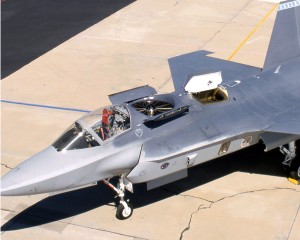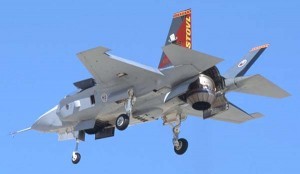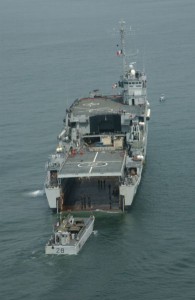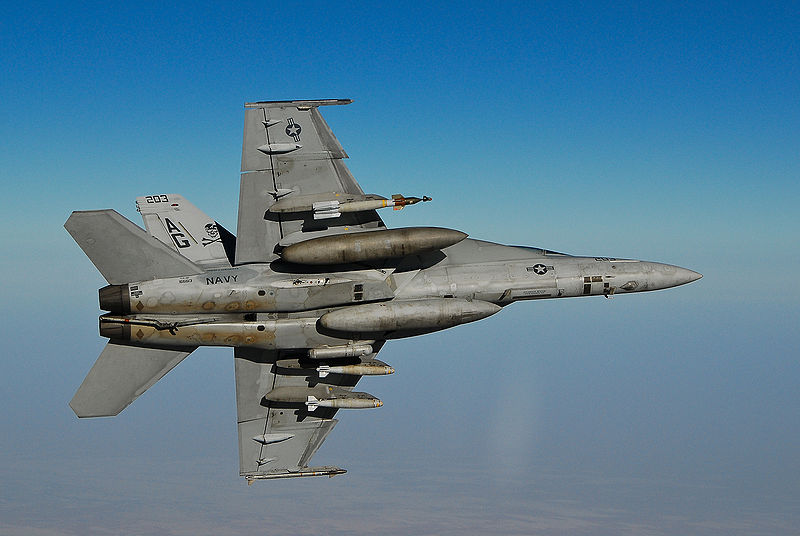 In a previous post titled “JSF Circus Act – The Clowns Take the Stage,” I addressed recent disturbing developments in the already troubled Joint Strike Fighter program in which the Marine F-35B V/STOL (vertical/short takeoff & landing) variant has come under fire and faces an uncertain future.
In a previous post titled “JSF Circus Act – The Clowns Take the Stage,” I addressed recent disturbing developments in the already troubled Joint Strike Fighter program in which the Marine F-35B V/STOL (vertical/short takeoff & landing) variant has come under fire and faces an uncertain future.
First, let me be clear that I have great respect for the Commandant of the Marine Corps, Gen. James Amos, his stellar career and service to his country. That said, in my opinion there’s nothing disrespectful or unpatriotic about questioning the weapons system acquisition process or his role in it when the current status of the JSF program is compared with its mis-managed past and projected into the next stage.
This post focuses additional attention on the efforts of Gen. Amos the to deal with the possibility that the B variant might not survive while doing everything in his power to see that it does. He has reason to be nervous.
 On January 6, SecDef Robert Gates announced that while the Navy and Air Force JSF versions are proceeding satisfactorily, he was putting the Marine Corps’ F-35B JSF on a two-year probation because of “significant testing problems which may lead to a redesign of the aircraft’s structure and propulsion, changes that could add yet more weight and more cost to an aircraft that has little capacity to absorb more of either.” In the Pentagon’s fiscal year 2012 budget request, Gates keyed on the technical and schedule hiccups with the Lockheed Martin airframe and Pratt & Whitney primary engine.
On January 6, SecDef Robert Gates announced that while the Navy and Air Force JSF versions are proceeding satisfactorily, he was putting the Marine Corps’ F-35B JSF on a two-year probation because of “significant testing problems which may lead to a redesign of the aircraft’s structure and propulsion, changes that could add yet more weight and more cost to an aircraft that has little capacity to absorb more of either.” In the Pentagon’s fiscal year 2012 budget request, Gates keyed on the technical and schedule hiccups with the Lockheed Martin airframe and Pratt & Whitney primary engine.
On March 8th, Amos told the Senate Armed Services Committee that in a few weeks he will give Gates a set of metrics that, if followed, may get the B-model off probation earlier than the two-year mark set. Amos told the committee the program is on “a good glide slope” regarding the aircraft’s weight, an issue that has plagued the F-35B’s development. “I’m optimistic,” about the program’s future, he said, and he believes the changes put in to the F-35B’s testing and oversight have the program “lined up for success.” Again, with respect to Gen. Amos, notice the buzz words.
 To support that opinion, Amos pointed out that since January, the F-35B has carried out 140 percent of its scheduled flights, achieved 200 percent of its scheduled test points, and is conducting four to five times as many vertical landings as it did last year. He told lawmakers recently that he is closely monitoring development of his service’s variant and stressed that he believes the B model is “vital” to his service’s ability to conduct expeditionary operations. “During the next two years of F-35B scrutiny, I will be personally involved with the program and closely supervising it. Continued support and funding from Congress is of utmost importance.”
To support that opinion, Amos pointed out that since January, the F-35B has carried out 140 percent of its scheduled flights, achieved 200 percent of its scheduled test points, and is conducting four to five times as many vertical landings as it did last year. He told lawmakers recently that he is closely monitoring development of his service’s variant and stressed that he believes the B model is “vital” to his service’s ability to conduct expeditionary operations. “During the next two years of F-35B scrutiny, I will be personally involved with the program and closely supervising it. Continued support and funding from Congress is of utmost importance.”
Under questioning from Sen. Jack Reed (D-R.I.), Amos again stressed his optimism about the aircraft’s progress. “It’s my hope that we can get off that (probation period) well before two years. And it’s my intent to, sometime this spring, offer to the Secretary of Defense information that he might consider as the threshold for getting the airplane off of probation and back into the regular mindset of production.”
Reed sought assurance that the aircraft has seen its last major schedule change and is “finally on track.”
 Amos said the F-35B’s structural issues, bulkheads and weight gain, “are progressing well. I’m going to pay attention to the aircraft performance, how it’s doing in flight both in vertical and horizontal flight, the weight growth of the airplane, which in a vertical-landing airplane is very critical. Right now, we are on a good glide slope in weight growth, and they’re not going to add a pound that I’m not aware of to that airplane. We have to talk about it.” Amos added that engineering challenges and test performance are “on his radar.” Note again the aviator-tinged buzz words.
Amos said the F-35B’s structural issues, bulkheads and weight gain, “are progressing well. I’m going to pay attention to the aircraft performance, how it’s doing in flight both in vertical and horizontal flight, the weight growth of the airplane, which in a vertical-landing airplane is very critical. Right now, we are on a good glide slope in weight growth, and they’re not going to add a pound that I’m not aware of to that airplane. We have to talk about it.” Amos added that engineering challenges and test performance are “on his radar.” Note again the aviator-tinged buzz words.
Navy Secretary Ray Mabus, testifying alongside Amos at the Capitol Hill budget hearing, described Amos as an F-35B “program officer” who “gets updates on a very frequent and very routine basis.”
“It’s at least my understanding . . . that the issues associated with the B version are engineering in nature,” Mabus said. “And the question is whether those engineering issues can be solved inside weight limits and inside financial boundaries, and that that is what we’re concentrating on.”
I should hope so, and pardon me, but those are “Well, duh” comments that offer nothing of substance.
 Amos emphasized he believes the F-35B is vital for use on large-deck amphibious ships. “This is more than just the Marine Corps,” the general told Sen. Kay Hagan (D-N.C.). “If we lose the F-35B, there is no plan B for fixed-wing airplanes on the large-deck amphibs. Our nation’s capability to project power and influence in critical situations will be cut. So the F-35B is a requirement. I’m optimistic. What I’m seeing now is very encouraging.”
Amos emphasized he believes the F-35B is vital for use on large-deck amphibious ships. “This is more than just the Marine Corps,” the general told Sen. Kay Hagan (D-N.C.). “If we lose the F-35B, there is no plan B for fixed-wing airplanes on the large-deck amphibs. Our nation’s capability to project power and influence in critical situations will be cut. So the F-35B is a requirement. I’m optimistic. What I’m seeing now is very encouraging.”
SASC Ranking Member John McCain (R-Ariz.) expressed frustration with the overall F-35 program and asked Amos for updates on “almost a monthly basis.”
“I hate to keep throwing around the word disgraceful, but the cost overruns and the delays have been unfortunately characteristic of a lot of our acquisitions problems and challenges over the past several years,” McCain said. “So, I know, Gen. Amos, you will keep us informed, but we don’t want to be surprised.”
It doesn’t take an expert to predict that McCain’s future will undoubtedly contain a few more F-35B “bolts from the blue.”
As a postscript to this topic, check out a comment on the previous JSF post received from a fellow fighter pilot. His point strikes at the very core of the lunacy, which is this: Marine Corps Aviation is dedicated first and foremost to close air support of Marines on the ground slugging it out with an enemy. The operative word in the last sentence is “close.” Eyeball-to-eyeball close. The F-35B’s stealth technology means absolutely nothing to a gunner who can see the airplane.
And that’s just the first of many factors mentioned in the comment that challenge the decision for the Marines to use the most expensive and complicated airframe and engine combination ever purchased for the US military as a weapons delivery platform for close air support.



